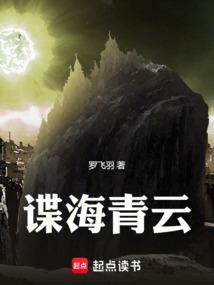Blending of Planes: I am leisurely farming
Chapter 11: Start to open up the wasteland
【Today, Dockley State Representative Alonso Furlong issued a motion: In view of the fact that the southern part of the Stardew Mountains is rich in resources but has poor transportation, it is recommended to unite local capital and give companies preferential policies. For example, the Joja Group has rich experience in developing remote areas, so it is recommended to increase investment to complete the development of remote areas.】
[The temperature in Stardew Valley today is -2C~6C. Sunny, southwest wind 2~3. It is expected to continue to rise next week. Pay attention to the melting snow in the mountains and be careful of floating ice. ]
【…】
In the early morning, the old transistor TV in the house broadcasts today's programs with a unique rustling sound.
"It's finally warming up." In the small courtyard surrounded by a simple fence, on a piece of compacted soil that had just been compacted by humans, Sean rubbed his cold hands with some emotion.
His hands did not stop. He picked up the last piece of washed clothes and shook his hands. A cool mist filled the air and the clothes spread out in the air and were hung to dry on the clothesline that Sean had made of bamboo two days ago.
"It's so cold!"
Sean stomped his feet which were numb from the cold, found a rag, wiped his hands which were red from the cold from washing clothes, and quickly put them into his pockets to warm them.
Spring plowing is approaching, and we can start preparing for land reclamation.
After a few days, as the temperature rose, the soil was no longer frozen like a stale five-nut mooncake, which could not be penetrated by a knife or chopped by an axe.
Although it is very difficult to plow the land now, as the saying goes, sharpening the knife does not delay the chopping of wood, the early preparatory work, such as dredging the channels, can be done first.
Taking out the agricultural tools from the warehouse, Sean pushed the cart along the irrigation canal opened by his ancestors, walking on the still frozen ridges of the fields.
Arriving at the northern part of the farm, Sean stopped.
Near the river, a few dozen meters west of the stone bridge that crosses the river and leads to the coal mine forest, the source of the abandoned irrigation canal water is in the river to the north.
The canal that was working when Grandpa Sean was alive is now piled with silt, and dry weeds are growing in the silt, one crop after another.
The entire channel was blocked, like an unattended, old, long-haired stray dog, exuding a desolate and dilapidated atmosphere.
Sean walked to the edge of the canal, turned over and jumped down. The canal wall was about 60 centimeters high, just reaching Sean's thigh.
He took a hoe from the ridge of the field beside the canal and carefully dug away the mountain of silt that was blocking the source of the canal, revealing huge rocks wrapped in the silt.
Ignoring the lingering fishy smell from the freshly dug silt, Sean picked up a handful of dry grass to wipe off the remaining silt on the boulder and began to examine it carefully.
Fortunately, the huge rock that serves as the gate still fits tightly and performs its duties, without any signs of wind erosion or cracking due to the force of time.
Sean was delighted that the gate was intact, saving a lot of effort.
It is not easy to find a huge stone that can be used as a gate, otherwise he would have a headache about where to find the stone for the gate.
Irrigation canals play a significant role in traditional agricultural production.
As an irrigation and drainage channel, irrigation canals can not only open the gates to release water to irrigate crops in the dry season, but also divert water flow when the rainy season comes to prevent waterlogging in the fields.
After checking that the gate was safe and sound, Sean picked up the long-handled shovel next to him and applied force close to the bottom of the channel to avoid damaging the hardened loess waterproof layer.
As I shoveled, even though it was winter, bubbles were still bubbling in the cracks of the mud on the edge of the shovel.
Sean held the shovel handle with his waist and horse together, and slowly exerted force. A basin-sized piece of mud, along with the weeds that were rooted in it and growing tenaciously, was scooped up and thrown together beside the ditch.
Shovel after shovel, silt was thrown out from time to time, and the silt beside the canal had already piled up into a long line.
Slowly, Sean's shoes, trouser legs, sleeves, and entire body were covered in mud.
Sweat flowed through his skin, dissolving the mud and leaving behind long sweat stains with mud. Sean took out a clean towel from the space and wiped the sweat off his face to prevent the sweat from invading his eye sockets.
Farm work is like this, mechanical, boring, tiring and dealing with soil all day long, using hard work in exchange for the return of the land. If Sean hadn't become much stronger, he probably wouldn't be able to straighten his back right now.
After the canal was cleared, the water gurgled around the ridges, the grains in the fields were ripe, golden, the wind blew the wheat waves, and walking in the fields startled the birds that were stealing food. Sean enjoyed it, imagining the scene after autumn, when all the hard work would turn into the joy of a good harvest.
Nearing noon, Sean stopped clearing the canal behind him, looking at the canal that had been cleared for more than a hundred steps.
It's enough. Sean plans to reclaim ten acres of land this year. Given the current complex situation in Stardew Valley, if there are more, Sean won't be able to take care of them all by himself, not to mention that there is also a bighead orchard waiting for Sean to deal with.
According to the size of about 26x26 meters per acre of land, the canal is distributed on each side for five acres, and the canal with a length of more than steps can just cover the entire area.
Jumping onto the canal, Sean stretched his tense bones and relieved his tired muscles.
The fertile black soil around the canal is now gravel, overgrown with weeds and parasitic vines.
Unlike the noisy days in the past, the wind today is very calm, making it a good day to set fire to the ground and remove weeds.
Although burning land has many harmful effects such as polluting the environment, there are no other good options due to limited manpower.
It depends on local conditions. Burning the land is probably the most effective and economical way to remove dry weeds.
Burning can also burn some grass seeds and insect eggs, reducing weeds and pests in the next year. Although burning the land will lose some of the fertility of the land, the remaining wood ash can also be used as a part of potassium fertilizer.
Sean paced along the ridges of the fields, measuring the approximate area of each acre of land, leaving a distance of about 3 meters across the canal as a passage for walking and future machinery.
After confirming the approximate distribution of the ten acres of land, Sean took out a nine-toothed rake from the cart. He used the rake to remove weeds along the determined boundaries and poured some freshly dug silt on some areas with lush vegetation to create a firebreak more than one meter wide.
After confirming the downwind direction, Sean piled up several weeds he had just removed at the upwind side and then lit them one by one.
First, bursts of black smoke came out, but there was no fire. Not long after, charred straw appeared, and sparks occasionally shot up from the billowing black smoke.
A gust of winter wind blew, and the wind suddenly increased, causing the fire to grow suddenly.
The thick flame covered the entire haystack and danced in the air. Not satisfied after eating the entire haystack, the hungry flame moved its body and rushed to spread towards the dry grass in the distance.
Soon the fires merged together, and black smoke covered half of the sky, lowering the entire world.
At this time, Sean took out two sweet potatoes from the space and washed them by the river. Then he put the sweet potatoes under the pile of dead branches that he had cleared out when clearing the weeds just now.
There was a dazzling flash of fire.
Baked sweet potatoes, start!
While waiting, Sean sat on the edge of the field leaning against the cart, took out the steaming food from the space and started eating.
The raging fire in the distance dispelled the winter chill. After finishing his meal, Sean was peeling sweet potatoes with a branch. He wanted them to be an after-meal snack and not let them burn. At the other end, he was watching the fire to prevent it from spreading out of the firebreak.
The black smoke gradually dissipated and the fire was almost extinguished. Before evening, the entire western sky was dyed orange.
He took out the steaming sweet potato from the remaining ashes and tossed it with his hands.
After peeling the sweet potato, Sean took a bite without caring about the heat. It was soft, sweet and left a lingering fragrance on his lips and teeth.
"It's so fragrant!"
You'll Also Like
-

Dragon Clan: Little Dragon Man Changes Job to Food Hunter
Chapter 373 1 hours ago -

American comics: Enlightenment in Arkham, Ascension to Homelander.
Chapter 490 1 hours ago -

Rebirth of the Totem Pole, I became a taboo
Chapter 353 1 hours ago -

EVA: Shinji Ikari Returns from the Dragon Clan
Chapter 151 1 hours ago -

Just turned over a new leaf and became a wise and intelligent student
Chapter 416 1 hours ago -

Can not doing what one wants be called rebirth?
Chapter 444 1 hours ago -

Survive in the Wilderness with Celebrities
Chapter 362 1 hours ago -

Journey to the West: Demon Emperor: Beginning as a Little Toad
Chapter 414 1 hours ago -

The Spy
Chapter 418 1 hours ago -

Occupation? I won’t even hit a dog!
Chapter 345 1 hours ago










